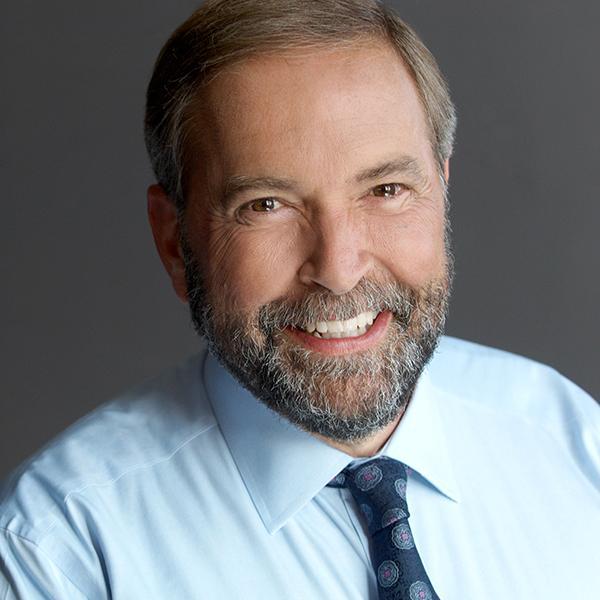On August 2nd 2015, a campaign whose results would be of utmost importance to Canada began. At 78 days, this was to be the longest campaign in the history of Canadian politics. It began with a tight three-way tie between the three major Canadian parties: the New-Democratic Party (NDP), the Conservatives, and the Liberals. Three different parties; three different leaders. At the head of the NDP, a man called Tom Mulcair. The conservatives are lead by Stephen Harper, who has been Prime Minister since 2006. The liberals, in turn, are lead by Justin Trudeau, the son of former long-standing Prime Minister Pierre Elliot Trudeau.
Each presented a different approach to governing. Mulcair offered a tough stance on climate-change, lowering student debt, adopting a more generous stance towards immigration, and dropping out of the US-led coalition against ISIS. Mulcair made it very clear that he was intent upon defeating Mr. Harper, and there was talk of the possibility of a coalition government between the Liberals and the NDP. However, Trudeau ruled this out.

Stephen Harper offered more of what Canadians had seen for a decade: his tough attitude towards crime and drugs, an active role in wars overseas (namely the war in Iraq alongside the US), and various tax cuts. However, he was criticized by both Trudeau and Mulcair for putting Canada’s relationship with the US in jeopardy over many matters including the Keystone XL pipeline (a crude-oil pipeline from Alberta, Canada to Steele City, Nebraska). Harper was for this pipeline; Obama was against it.

Justin Trudeau presented himself as the face of change. He is a strong supporter of the LGBT community, has generous views towards immigration, and proposed kick-starting the economy through running a three-year deficit and investing heavily in infrastructure. Like Mulcair, he promised to pull out of the bombing campaign against ISIS, however he has also said he will legalise marijuana – a stark contrast from Harper’s ‘war on drugs’.

Canada operates on a first-past-the-post electoral system. This means that you do not need to get more than half of the votes to win, you just need to get more than your opponent(s). For example, if Trudeau got 38% of the votes, Harper got 34%, Mulcair got 32%, and other smaller parties got the remainder, Trudeau would win even though less than half of the country wants him in office.
More than half of Canadians did not want Stephen Harper as their Prime Minister. Therefore, they were looking for a party that could defeat Harper while offering Canada a brighter future. Two parties were looking to be seen as exactly that: the NDP and the Liberals. They were both fighting for the votes of the 70% of Canadians who wanted to get rid of Harper.
The race was very tight until about two weeks before the election. At this point, Mulcair defended a woman’s right to wear the hijab during her citizenship test. This seemed to alienate voters, for after this the polls showed Mulcair falling increasingly in the polls. Proportionally, this meant an increase for Trudeau nationally. Trudeau kept rising until, on election night, there was an 81% chance his party would win the most seats in Parliament.
The current Prime Minister of Canada, Stephen Harper, had run the country using what Trudeau referred to as “the politics of fear and division”. He was strongly criticized for various bills he passed, namely bill C-51. Officially to protect Canadians from terrorism and such violence, C-51 gave greater power to police authorities, allowing them to target activities that could “undermine the security of Canada”. Nevertheless, after a decade with the same leader, most of the country was ready for change.
On Monday, October 19th, Canadians made their way to the voting stations and cast their ballots. Trudeau came out with a majority government (when a party wins more than half of the seats in Parliament), winning a total 180 seats out of the available 334. The conservatives will form the official opposition (the party with the second most seats). On this day, Mr Trudeau became the incoming Prime Minister of Canada.
This strong rush of support for Mr Trudeauat’s Liberal party at the last minute has been referred to as “Trudeaumania”. The term originated as Pierre Trudeau’s support across the country increased at an incredible pace.
One of Trudeau’s first acts as incoming Prime Minister was contacting US President Barack Obama. In their first discussion over the phone, Trudeau explained to Obama his commitment to pull out of the US-led bombing campaign against ISIS. However, Mr Trudeau has given no sign as to whether he will bring home the Canadian special forces troops stationed in Iraq, who are there training the Kurdistan forces and helping them modernize their tactics.
Trudeau has not yet officially taken up the office, and one of his priorities in the coming weeks will be choosing a cabinet to help him run the country. He has announced that this will be done by November 4th at the latest.
This election has attracted the world’s eye, with its results being discussed on the New York Times, Al-Jazeera, CNN, BBC, and of course The Update.
The Trudeau government will give Canada a different face on the world stage. Many hope it will go back to being a strong partner in peacekeeping missions as it was in the 20th century. Moreover, Trudeau has surrounded himself by a great team, including business executives, the former head of the police, and retired military generals. By voting for Trudeau, Canadians hope that Trudeau’s promise of change will be achieved and that a better Canada will emerge.
The information presented in this article does not necessarily reflect the views or beliefs of The Update. We are reporting either the facts or opinions held by third parties related to the subject of the article.


1 Comment